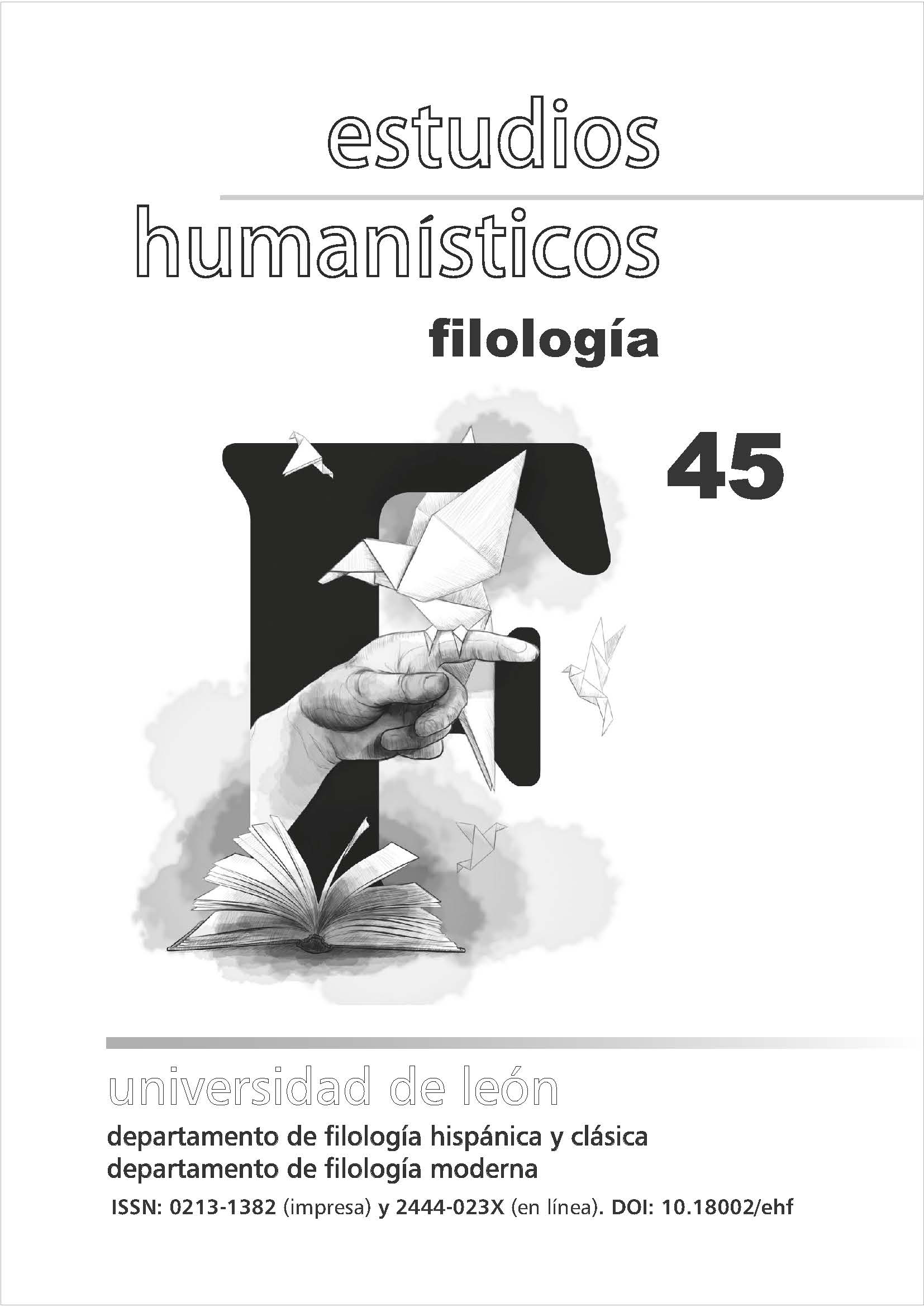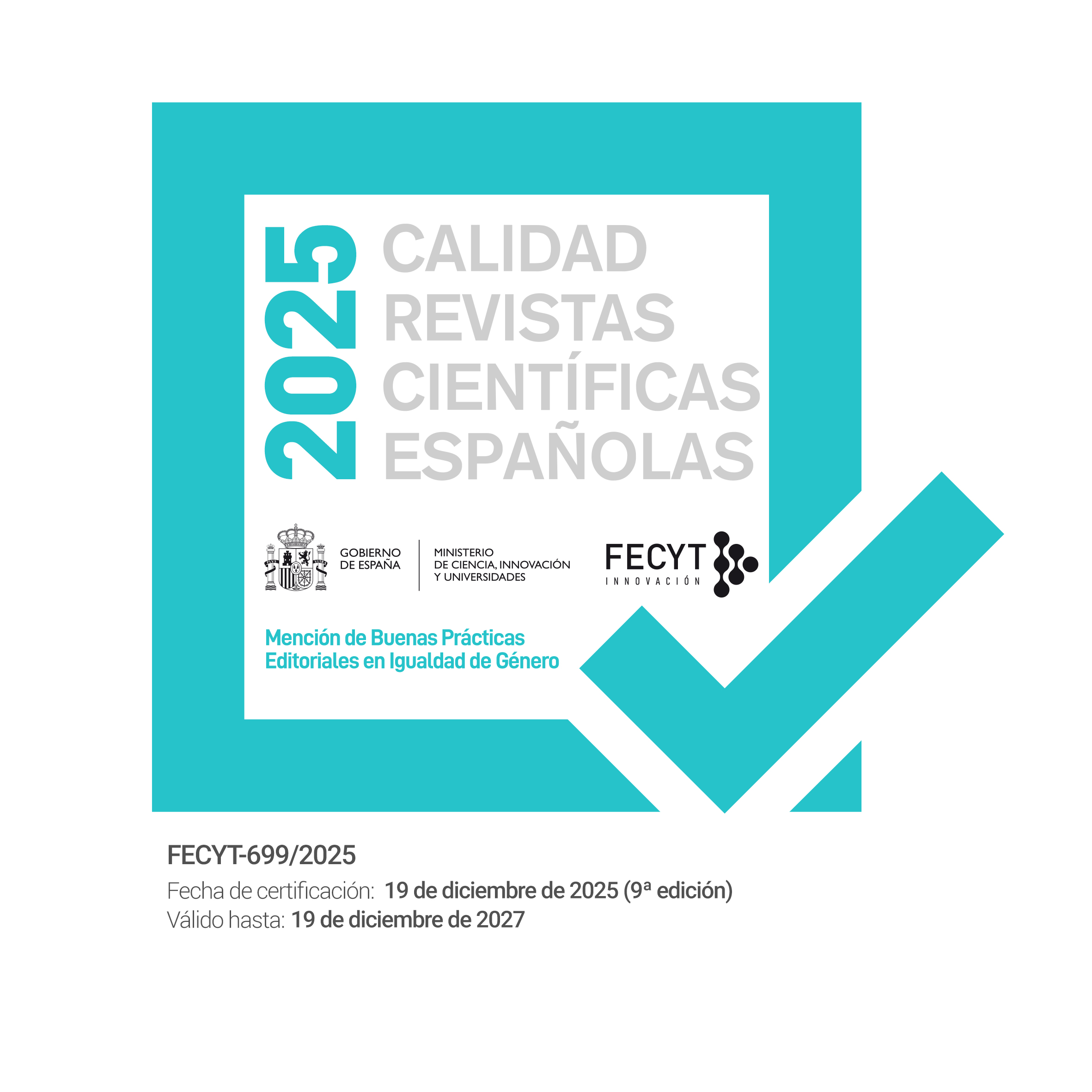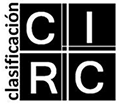Rastreando el gótico romántico: muestras de transtextualidad en El Fantasma de la Ópera de Gaston Leroux y Abre los ojos de Alejandro Amenábar
DOI:
https://doi.org/10.18002/ehf.i45.7706Palabras clave:
tradición gótica, héroe byroniano, el doble, máscara, metaliteraturaResumen
Este artículo tiene como objetivo ofrecer un análisis comparativo entre la novela Le fantôme de l’opéra (1910) de Gaston Leroux y la película Abre los ojos (1997) de Alejandro Amenábar en el que se interpretará el largometraje de Amenábar como una adaptación postmoderna de la novela original de Leroux. También se identificarán aquellos rasgos propios de la tradición gótica y del relato romántico decimonónico reflejados en la aproximación modernista de Leroux y reinterpretados en el largometraje postmoderno de Amenábar en base a la noción de transtextualidad.
Descargas
Métricas alternativas
Citas
Alder, E. (2016): “Urban Gothic”, in W. Hughes, D. Punter and A. Smith (eds.) The Encyclopedia of the Gothic, Oxford, Wiley-Blackwell: 703-706.
Amenábar, A. (1997): Abre los ojos, España, Sogecine.
Bakhtin, M. M. (1981): The Dialogic Imagination: Four Essays by M.M. Bakhtin, translated by M. Holquist and C. Emerson, Austin, University of Texas Press.
Bakhtin, M.M. (1984): Rabelais and His World, Trans. K. Clark, Cambridge, Harvard University Press.
Bakhtin, M.M. (1990): “Author and Hero in Aesthetic Activity”, in M. Holquist and V. Liapunov (eds.) Art and Answerability: Early Philosophical Essays by M.M. Bakhtin, translated by V. Liapunov, Austin, University of Texas Press: 4-256.
Botting, F. (2004): Gothic, London, Routledge.
Briggs, J. (2000): “The Ghost Story”, in D. Punter (ed.) A Companion to the Gothic, Oxford, Blackwell: 122-131.
Chromik, A. (2016): “Vampire Fiction”, in W. Hughes, D. Punter and A. Smith (eds.) The Encyclopedia of the Gothic, Oxford, Wiley-Blackwell: 707-711.
Genette, G. (1997): Palimpsests: Literature in the Second Degree, translated by C. Newman and C. Doubinsky, Lincoln, University of Nebraska Press.
Goffman, E. (1963): Stigma: Notes on the Management of Spoiled Identity, Englewood Cliffs, Prentice-Hall.
Hall, A.C. (2009): Phantom Variations: The Adaptations of Gaston Leroux’s Phantom of the Opera, Jefferson, McFarland.
Haraway, D. (2008): Simians, Cyborgs and Women: The Reinvention of Nature, New York, Routledge.
Hayles, N.K. (1996): “Embodied Virtuality or How to Put Bodies Back into the Picture”, in M.A. Moser and D. MacLeod (eds.) Immersed in Technology: Art and Virtual Environments, Cambridge, MIT Press: 1-28.
Heredero, C.F. (1999): 20 nuevos directores del cine español, Madrid, Alianza Editorial.
Hogle, J.E. (2002): The Undergrounds of the Phantom of the Opera: Sublimation and the Gothic in Leroux’s Novel and Its Progeny, London, Palgrave Macmillan.
Hogle, J.E. (2016): “Monstrosity”, in W. Hughes, D. Punter and A. Smith (eds.) The Encyclopedia of the Gothic, Oxford, Wiley-Blackwell : 455-458.
Husson-Casta (1997): Le travail de ‘l’obscure clarté’ dans Le fantôme de l’opéra de Gaston Leroux, Paris, Archives des Lettres Modernes.
Hutcheon, L. (2006): A Theory of Adaptation, New York, Routledge.
Kristeva, J. (1982): Powers of Horror: An Essay on Abjection, translated by L.S. Roudiez, New York, Columbia University Press.
Kristeva, J. (1986): The Kristeva Reader, in T. Moi (ed.), New York, Columbia University Press.
Kristeva, J. (1991): Strangers to Ourselves, translated by L.S. Roudiez, New York, Columbia University Press.
Leroux, G. (1910): Le fantôme de l’opéra, Paris, Pierre Lafitte.
Moers, E. (1976): Literary Women, London, Women’s Press.
Peeples, S. (2002): “Poe’s ‘constructiveness’ and ‘The Fall of the House of Usher”, in K.J. Hayes (ed.) The Cambridge Companion to Edgar Allan Poe, Cambridge, Cambridge University Press: 178-190.
Perri, D. (2008): “Amenábar’s Abre los ojos: The Posthuman Subject”, Hispanófila, 154, 89-98.
Rank, O. (1971): The Double: A Psychoanalytic Study, in H. Tucker (ed.), translated by H. Tucker, Chapel Hill, University of North Carolina Press.
Santos Romero, F. (2008): “Abre los ojos de Alejandro Amenábar”, Frame: Revista de cine de la biblioteca de la Facultad de Comunicación, 3, 196-212.
Santurenne, T. (2004): “Monstruosité et réflexion métalittéraire dans Le Fantôme de l’opéra de Gaston Leroux”, Belphégor, 3.2, 1-13.
Sedgwick, E.K. (1986): The Coherence of Gothic Conventions, London, Methuen.
Sempere A. (2000): Alejandro Amenábar: cine en las venas, Madrid, Nuevas Ediciones.
Smith, A. (2016): “Modernism”, in W. Hughes, D. Punter and A. Smith (eds.) The Encyclopedia of the Gothic, Oxford, Wiley-Blackwell: 450-454.
Spooner, C. (2004): Fashioning Gothic Bodies, Manchester, Manchester University Press.
Stevens, D. (2010): The Gothic Tradition, Cambridge, Cambridge University Press.
Stoddard Holmes, M. (2016): “Disability”, in W. Hughes, D. Punter and A. Smith (eds.) The Encyclopedia of the Gothic, Oxford, Wiley-Blackwell, 181-184.
Todorov, T. (1975): The Fantastic: A Structural Approach to a Literary Genre, translated by R. Howard, Ithaca, Cornell University Press.
Vareille, J.C. (1989): L’homme masqué: le justicier et le détective, Lyon, Presses Universitaires de Lyon.
Wallace, D. (2016): “Female Gothic”, in W. Hughes, D. Punter and A. Smith (eds.) The Encyclopedia of the Gothic, Oxford, Wiley-Blackwell: 231-236.
Wilbur, R. (1967): “The House of Poe”, in R. Regan (ed.) Poe: A Collection of Critical Essays, Englewood Cliffs, Prentice-Hall: 98-120.
Williams, A. (2016): Art of Darkness: A Poetics of Gothic, Chicago, Chicago University Press.
Wolfreys, J. (2016): “Poststructuralism and the Gothic”, in W. Hughes, D. Punter and A. Smith (eds.) The Encyclopedia of the Gothic, Oxford, Wiley-Blackwell: 517-520.
Descargas
Publicado
Cómo citar
Número
Sección
Licencia
Derechos de autor 2023 Marta Miquel Baldellou

Esta obra está bajo una licencia internacional Creative Commons Atribución-NoComercial-CompartirIgual 4.0.
Los autores o autoras que publican en esta revista están de acuerdo con los siguientes términos:
- Los autores o autoras conservan los derechos de autoría de su trabajo y ceden de forma no exclusiva los derechos de explotación (reproducción, distribución, comunicación pública, transformación) a la Universidad de León, por lo que pueden establecer, por separado, acuerdos adicionales para la distribución no exclusiva de la versión de la obra publicada en la revista (por ejemplo, alojarlo en un repositorio institucional o publicarlo en un libro), con un reconocimiento de su publicación inicial en esta revista.
- Este trabajo se encuentra bajo la Creative Commons Attribution-NonCommercial-ShareAlike 4.0 International License. Puede consultarse desde aquí la versión informativa y el texto legal de la licencia.
- Se permite y se anima a los autores y autoras a difundir electrónicamente las versiones pre-print (versión antes de ser evaluada) y/o post-print (versión evaluada y aceptada para su publicación) de sus obras antes de su publicación, ya que favorece su circulación y difusión más temprana y con ello un posible aumento en su citación y alcance entre la comunidad académica.











